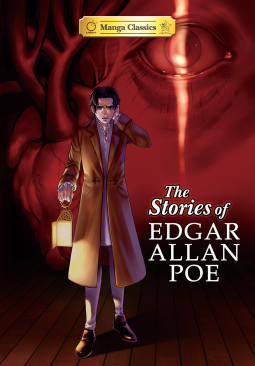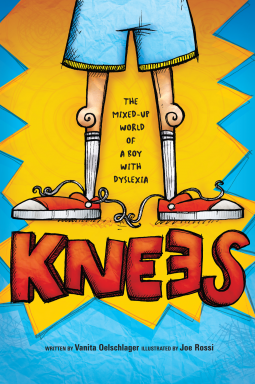
Secrets Behind Things That Look Good
How Small Changes in Design Lead to a Big Jump in Sales
by Claire Langju Lee
This title was previously available on NetGalley and is now archived.
Send NetGalley books directly to your Kindle or Kindle app
1
To read on a Kindle or Kindle app, please add kindle@netgalley.com as an approved email address to receive files in your Amazon account. Click here for step-by-step instructions.
2
Also find your Kindle email address within your Amazon account, and enter it here.
Pub Date Aug 22 2017 | Archive Date Aug 22 2017
Description
When there are two identical products, how is it that one looks better than the other? Why do some designs stick in your memory when you've only seen them once? If something looks good, there's a good reason why. Here are 9 laws of visual attraction, which will sate your curiosity.
Secrets behind Things that Look Good shares in detail nine sales-boosting techniques that Lee discovered and experienced firsthand while providing visual merchandising consulting to 2,000 businesses including LG Electronics, New Balance, and major department stores over 23 years. The book shows how small changes in color, light, angle, pattern, and arrangement can lead to a big jump in sales.
We are naturally drawn to things that look good. But it's not easy to pinpoint why we find them appealing. Good design, vivid colors, trendiness, high product quality, frequent ad exposure . . . none of these factors are perfect explanations. This is because attraction is an instinctive process driven by all five senses. And behind this process lies an intricate science.
Secrets behind Things that Look Good presents nine secrets for creating a big difference in sales. Discover the secrets to product displays and store designs that instantly captivate consumers.
Advance Praise
She elaborates from these on all the complicated and often misunderstood ways in which vision affects the other senses—even taste, which, according to the author, is primed far more often by sight than people tend to realize. And throughout the book there are interesting tidbits from Lee’s experiences, such as the reflective qualities of various shades. All of this should appeal not only to marketers, but to anybody who’s ever noticed efficient and vibrant displays as well. An engaging and eye-opening study of the ways in which the arrangements of colors shape buying decisions.
―Kirkus Reviews
We named the exhibit we held last year “Esprit Dior,” or the “spirit of Dior.” We wanted to emphasize that there is more to Christian Dior than meets the eye—that while invisible, the spirit of Dior underpins the brand. Claire Langju Lee’s Secrets behind Things that Look Good shows why it isn’t only luxury brands that need a company philosophy. And why the most important issue for brands at the end of the day is to make their philosophy seen.
―Lee Jong Kyu, Regional Director, Christian Dior Couture Korea
Available Editions
| EDITION | Ebook |
| ISBN | 9791186560112 |
| PRICE | $9.99 (USD) |
Links
Featured Reviews
 Rebecca T, Educator
Rebecca T, Educator
If you take for granted that selling products, or at least choice among products, has little to do with conscious thought, you then turn to the things that do matter: mostly what the store etc. look like, though smell and sound can also matter. This is Lee’s specialty, and she mixes some research with rules of thumb to explain her philosophy of store design. She’s big on accent color as the most important—she says that green only accounts for 5% of Starbucks’ color scheme (taking into account the rest of the store, the full awnings, etc.) while the rest is more neutral dark brown and warm ivory. I also learned the disgusting neologism “kidults” to describe a particular category of consumers; yellow appeals to them. Coffee tastes stronger from a dark brown can than from a yellow one, though.
Lee also spends a lot of time talking about lighting: the right warmth of lighting, from the right distance, can make products inviting (and the wrong can make them look terrible and unflattering). But, Lee says, part of this is cultural, and South Koreans prefer brighter lights than Europeans and Americans. Backlighting, she thinks, doesn’t work in most commercial spaces; it “creates an air of mystery and authority by highlighting the edges of a subject, which is why it is often used in religious settings.”
Of particular interest to me, vision interacts with other senses: “shelving dark-colored products on top can create the illusion that they might topple over,” making some shoppers anxious. Other uses of color and heaviness include the use of black or other dark colors to package small, expensive products so they seem heftier. One company reportedly saved a lot of money in heating costs by painting blue cafeteria walls orange, making the place feel so warm that people routinely complained even when the temperature was lowered from 24 degrees C to 20.
Overall, people looking for new ideas for store design—and some no-nos—could probably nab useful tidbits from the book.
 Henk-Jan v, Reviewer
Henk-Jan v, Reviewer
Just like clothes make the man, a product's visual presentation is crucial. In Laws of Visual Attraction: Creating Displays That Sell, consultant Claire Langju Lee shares her lessons learned in colors, lightning, and shelf positioning. You'll read more on a brand image and logo, its primary and accent colors, but also on light temperature (Kelvin) and intensity (Lumen) and their effects on how people perceive themselves and the products they're looking at.
Store layout, the choice of tables, and other furniture in restaurants are addressed. Lifestyle, experience, and the art of illusion collide in the powerful principles across this book. Yes, it's short but inspirational to rethink your product placement and company branding. Cases from e.g. Starbucks, McDonald's, Walmart, Nike, and a bunch of clothing shops, and restaurants are included.
 Darren I, Media/Journalist
Darren I, Media/Journalist
Sweat the small stuff and, where necessary, make small but motivated changes to a product or service’s design and prepare for a boost in sales. This is the key takeaway from this interesting, thought-provoking book. Of course, sales may not be the only thing you can save on, as you will soon discover.
It is not always the case that big changes are the best, as often what may appear to be a minor change in focus can be the most yielding. It boils down to visual attraction that triggers the rational human being to make a purchase decision. When faced with effectively two identical products, something must trigger the buyer and it is not always price! This book takes the reader through the ‘laws of visual attraction’ to inspire them and help them implement this within their own businesses. The author has been doing visual merchandising consultancy for many top brands over the past 23 years, so clearly knows her stuff.
It is great that this book did not demand prior knowledge, although of course those with a background in merchandising will benefit even more from this. It can be a book for beginner, expert, the curious and even those working in unrelated areas – it is more than just making your store or product box look nice. The text is accessible, suits different audiences and delivers quality, informative advice freely and generously. Overall, a comprehensive mix of advice is given that can lead to informed transformation that might not be necessarily noticed by all (unless it is a ‘big bang’ approach). It may be visible to the company’s financial bottom-line.
One interesting take-out was that the right use of colour can even save on your energy bills! The author noted how a company painted its blue cafeteria walls orange, and managed to save a lot on air conditioning energy bills as it could reduce the temperature from 24C to 20C since everyone complained ‘how warm the building was’. Maybe I need to paint my house walls orange and see if this fools my wife and daughter!
This is a book you should consider!
Secrets Behind Things That Look Good, written by Claire Langju Lee and published by Influential. ISBN 9791186560112. YYYYY
Readers who liked this book also liked:
John Kotter; Holger Rathgeber
Business, Leadership, Finance, Nonfiction (Adult)




























